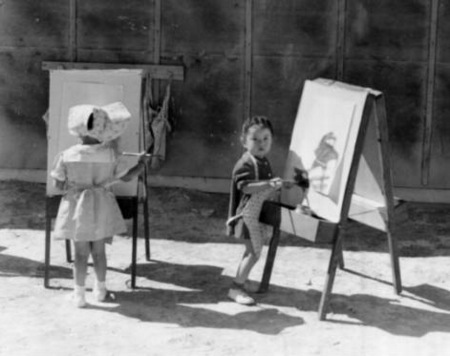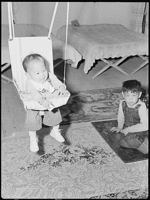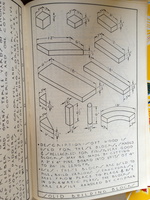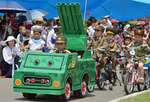
The Central Utah Relocation Center near Delta was later renamed Topaz Camp, after Topaz Mountain, which loomed over it to the west. When it opened on Sept. 11, 1942, several rows of tarpaper barracks had been finished and outfitted with an Army cot, a coal stove, and a lamp. The 8,000-plus Bay Area Japanese Americans who'd been stripped of their property and possessions and shipped to the middle of the BF Utah desert were left to build their own schools, churches, and furniture out of scrapwood.
Common areas in the barracks were often repurposed into co-op stores and pre-schools. All the furniture, easels, and playground equipment seen here in the photos of Eleanor Sekerak, an Anglo teacher who moved to Topaz from Washington, was made by the carpentry workshop in the camp.

The Topaz Museum, based in Delta, has preserved and restored a half-section of a dining hall, which had been sold to a local farmer and used as a shed for 50 years. Mrs Sekarak's scrapbook photos and other images and documents from Topaz Museum collection are available for viewing at the University of Utah Library's website.

My great-grandparents lived in Delta, but I never heard much talk of Topaz. Over Christmas, I found out that my grandfather on the other side of my family had actually worked building Topaz Camp. He was young, but would have had at least one, maybe two kids in 1942, and had to leave them and my grandmother behind somewhere that summer. Now I wonder if these sandboxes and stenciled school chairs were made from the wood he left behind.
Topaz Museum collection [lib.utah.edu]
Topaz Museum [topazmuseum.org]






Thanks for this, Greg. Interesting family story.
FYI, the Japanese American National Museum in LA (http://janm.org) is a great resource for both adults and kids looking to learn more about the internment of Japanese Americans and its aftermath as well as other aspects of the community.
Interesting stuff. I learned after my grandfather's death that he, an educator in central Utah, spent his summers there teaching. In his journals he spoke of how much he admired the people interred there and the travesty of what was happening, which I think was his primary motivator to volunteer his summers.
I also worked with a Japanese-American of this same era, about 10 years ago, who was very young at this time. His family lived in Brigham City, UT, and was forced to house many other Japanese-American families. Although they weren't put in a camp, it was an extreme hardship for everyone. After the war, some families chose to stay creating a small Japanese community in a very small, basically all white, Mormon town.
My great-grandma was born in 1912, she lived through the roaring 20's, the Great Depression, World War 2, and she's still alive. She is an amazing woman. This has taught me a little of what she went through. Thanks!!!